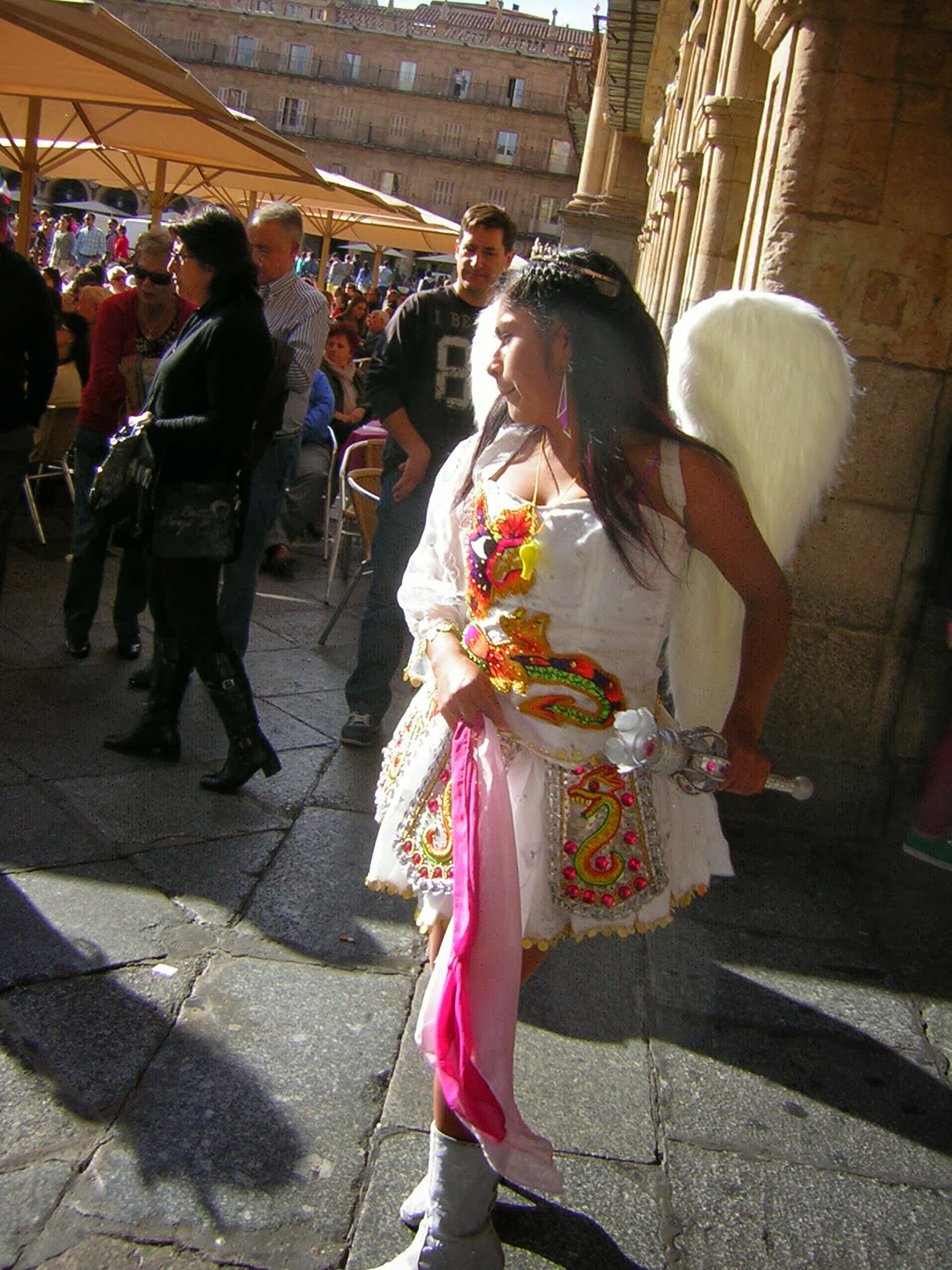Tasmania's capital Hobart was founded in 1804 during the Napoleonic Wars, so it was inevitable that important events would be recorded for future generations from these conflicts. The exploits of Wellington recorded in the naming of the city's mountain backdrop. Mt Nelson an inner city suburb, a reminded of Horatio Nelson's greatest victory against the combined French and Spanish fleet at Trafalgar [ Trafalgar Place] another Hobart landmark. The list is quite extensive Montpelier Retreat, Napoleon Street and of course the battle of Salamanca 1812, Duke of Wellington's victory in the Peninsular War when he drove the French out of Portugal and Spain.
Hobart's backdrop Mt. Wellington.
Salamanca Place a major market and entertainment area on Hobart's waterfront and is central to peoples idea of our city. I have often wondered what the original Salamanca looked like, I knew the city housed one of Europe's oldest and most distinguished university establish in 13th cent. and was quite beautiful. As a fairly inquisitive individual I felt that if ever the opportunity presented itself I would grasp it with both hands and visit. I had no visual picture of Salamanca and the ancient Roman town did not disappoint. A city of rich Renaissance architecture in golden coloured stone, of narrow cobbled streets, secured squares and intense voices of its student population of around 50000. Central to the old town is Plaza Mayor one of the largest and grandest in Spain, a square boarded by cafes, bars and restaurants, and the stage for local events not dissimilar to Hobart's Salamanca Place and Square. The old warm stone buildings, narrow streets complete with a 1st cent. Roman bridge with few buildings more than a few stories make the town a walkers delight. This was the border territory between Moorish Spain and Christian Europe that ran along the hilltops on the other side of the river.
Looking across to the old town from the Roman Bridge.
A University faculty.
During my stay there, totally unexpected tome the annual Dia de la Hispanidad 12th October festival took place. The event commemorates Columbus's discovery of the Americas. The day turned out to be full of surprises starting with the playing of drums that drifted into the hotel room. At street level the magnitude of the day were apparent, various ethnic groups from all over the Spanish world in full national dress danced up the narrow streets to Plaza Mayor to take part in some sort of competition. Peruvian, Venezuelan, Chilean, Argentinian, they all seemed to be there dressed in an array of exotic costumes playing any array of musical instruments. As the day progressed the various groups performed national and folk dances, often there seemed to be more than one group of dancers dancing at the same time. The atmosphere was a little chaotic, but the crowd did not seem to mind. Whether many of these groups now lived in Salamanca I have no idea for all I know many may have been students here to learn classic Castilian Spanish.
One young women performed a sort of flamenco dance in bare feel accompaniment of three drummers much to the delight of the crowd who responded as though at a bull fight. It was just as well she had her drummers as her feet would have been unable the stamp the beat, her act was quite exceptional. All the groups were dressed for carnival, young and old, male and female, all danced as though their life depended on it. Many costumes were from head to toe and quite out of this world. The day finished around 8pm and the Plaza returned to normal. The day had been so unexpected and was all the more pleasurable for that.
Dancer entering the Plaza.
Dancer group entering the Square.
Entering Plaza Mayor.
Solo Dancer.
Costumes to kill for.
Looking across Plaza Mayor Salamanca.
Waiting their turn.
Relaxing after another hard day!















.jpg)






